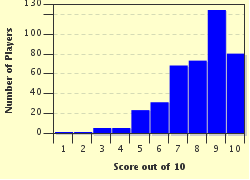Quiz Answer Key and Fun Facts
1. To which country would you travel to see these statues, which were made over 2200 years ago but were not discovered until 1974?
2. The document illustrated is a fragment of a number of documents found in some caves in Israel between 1947 and 1956. What is this collection of documents commonly known as?
3. How many types of scripts are inscribed on the Rosetta Stone?
4. The Liberty Bell symbolises freedom in the United States. What is inscribed on the bell?
5. This suit of armour, and the man who wore it, are historical and cultural icons of Australia. Who designed, made and wore the armour?
6. Which famous document established the principle that no-one, not even the king, is above the law?
7. The man pictured lent his name to which revolutionary killing device?
8. The buying and selling of which flower triggered the first recorded economic or speculative "bubble"?
9. The x-ray depicted here is the first x-ray ever taken and shows the hand of Anna Ludwig, the inventor's wife. To whom was Anna married?
10. This silver coin represents the first currency to be accepted internationally and is also the coin upon which the US dollar was based. From which country did it originate?
Source: Author
MotherGoose
This quiz was reviewed by FunTrivia editor
bloomsby before going online.
Any errors found in FunTrivia content are routinely corrected through our feedback system.

